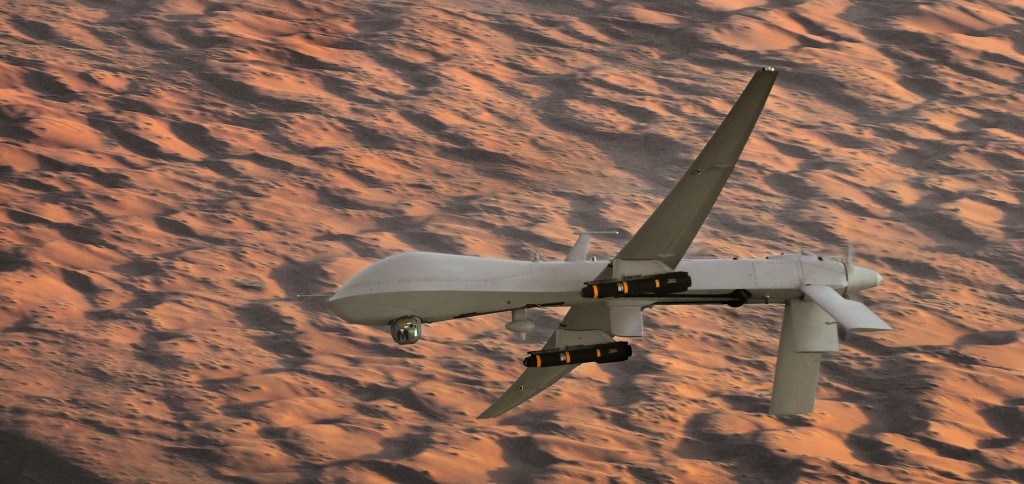Rick Whittle’s superb book on the creation and uses of the Predator drone needs to be read by the Pentagon’s head of acquisition, Frank Kendall, and everyone else who decides what weapons America buys, including the professional staff on Capitol Hill who tell their congressional bosses what’s real and why.
Whittle, who seems to be making a habit out of producing excellent books on the acquisition of major weapon systems, offers a vibrant tale of the painful, slow and uncertain development of this new class of weapon.
In his words, Predator’s designer “had offered an ingenious new technology that was revolutionary, but politics and personality had trumped performance…” That was his summary of the plane’s fate when it was first sold to another company, but it could stand as the program’s epitaph until the urgent hunt for Osama bin Laden shattered the political, cultural and policy restraints that bound it.
In many ways this is two books in one. The second half, which contains most of the hot news, is the sexier bit. But the first half, and the most readable, tells the tale of the brilliant and rebellious Israeli weapons designer Abraham Karem and his ultimately failed effort to design, build and sell drones to the US military and to make money at it. The second half details how the Predator finally got accepted by elements of the military and intelligence community and how they armed it and used it.
In addition to Karem, Whittle tells the tale of the canny businessmen brothers, Neal and Linden Blue, who buy the Israeli’s ideas and technology and do a much better job at General Atomics of convincing people to buy and to use them. But even they struggle against the ingrained cultures of the Navy and of the Air Force — dashing people with guts fly planes, not computers or guys sitting in trailers — and the rest of the US military who seemed to like the concept of drones, although they were not really sure what to do with them.
The Navy and the Air Force were not alone in badly managing a drone’s acquisition. The Army, Whittle reminds us, tried to develop a drone called Aquila. As has happened so many times with Army acquisition, the service had wasted more than $1 billion over 14 years on an utterly failed program when it was finally killed in 1987.
It is Whittle’s tale of Karem, who bet everything on his audacious move to America, that really captivates. Those of us who live the details of Pentagon weapons development often lose sight of the men and women whose brains give birth to the sometimes astounding technology our military fields. But Rick brings Karem to life for us. The man who played an important role in making Israel’s Air Force dominant in the Middle East — and who did it quickly and with genius — decided he must come to America and build drones that would change warfare.
In a choice so ironic it almost hurts, Karem initially named the revolutionary aircraft he designed, the Albatross. No one wanted it, but again a human being intervened, Ira Kuhn, a consultant to the Pentagon’s advanced weapons agency, DARPA. The physicist convinced DARPA to take $350,000 and invest it in something that was, at that point, a fancy model built by Karem in his garage.
Two great breakthroughs have made Predator a superb asset: the ability to control it from beyond the horizon, and its ability to fly for extraordinarily long periods without refueling. Karem was responsible for the design that allowed the plane to stay aloft for 24 hours or more. An engineer with the Air Force’s Big Safari operation, called “Werner” by Whittle, jury-rigged a setup to allow Predator to be controlled from virtually anywhere on the planet and allow its video feed to be watched live (with a one second or so delay) as the plane flew thousands of miles away from its pilot.
So the military had, for the first time in its history, a weapon that could stay aloft for much longer than a pilot and watch the enemy with a live video feed and use infrared and other sensors to keep tabs on him night and day.
But even with these attributes the military did not start screaming for Predator. The war in Bosnia initially sparked keen interest in the Clinton White House and among senior leaders at the Pentagon, but the plane did not take off as a weapon system. It took the Sept. 11, 2001 terrorist attacks by Osama bin Laden and his followers to finally prod the military and the intelligence communities to embrace the Predator. By this time Predator had been gestating for more than decade. Whittle got many of the principals to sit down and detail the sometimes stupid, sometimes silly, sometimes well-meant but misguided budgetary and policy decisions about the plane, including whether it could be armed.
Today, there are probably very few Americans who know that the armed version of the Predator was almost stopped in its tracks by the Intermediate-Range Nuclear Forces Treaty.The book does a good job of presenting that debate as well as a host of other exclusives contained in Whittle’s work, so I won’t go into them.
We’ve never done a book review here at Breaking Defense, and very few books about weapons are well-enough written or insightful enough to have ever prompted us to ben think of telling our readers about them. This work will, I predict, become a standard work for the military, the defense industry, for those who decide weapons requirements and for the Pentagon’s acquisition corps. If you’re a human being who wants to understand how countries buy advanced weapons, how they get designed and built and why, this is the book to read.
Whittle, who reports regularly for Breaking Defense (except when he’s writing books), tells his tale with verve, insight — and he got the goods. Read it.
(If you’re attending the Air Force Association conference today, Whittle speaks there at 1 p.m.)


